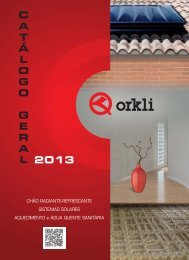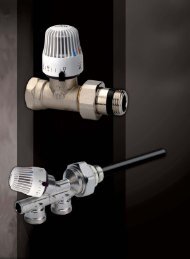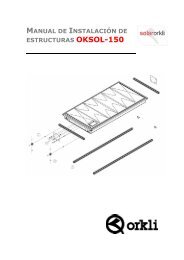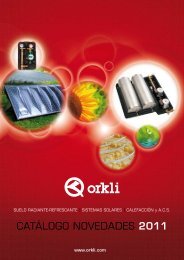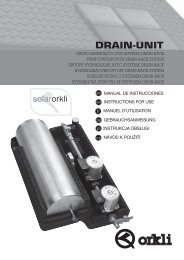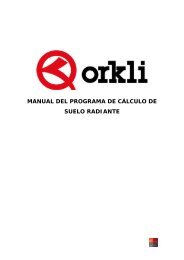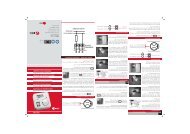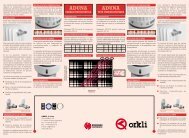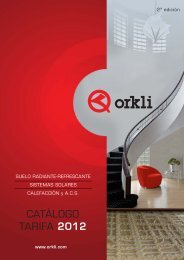General catalogue 2013 - Orkli
General catalogue 2013 - Orkli
General catalogue 2013 - Orkli
Create successful ePaper yourself
Turn your PDF publications into a flip-book with our unique Google optimized e-Paper software.
CLIMATE CONTROL<br />
THERMOCYCLIC CONTROL<br />
did you know...?<br />
Is the thermocyclic regulation of an indoor room based on a<br />
totally new regulation process?<br />
It calculates in advance when the actuator or heater should be switched on or off using a<br />
totally new, unique regulation process that learns the properties of each heating system in<br />
order to anticipate them and use them for its calculations.<br />
The system begins to learn from the first time it is switched on, to provide maximum comfort in<br />
every area and every room. It was patented on 27 January 2000 and successfully introduced in<br />
the European market.<br />
The tests carried out at the Institute of Thermodynamics and Technical Equipment for Buildings<br />
of the Dresden University of Technology were confirmed in practice: the energy savings<br />
were greater than with traditional thermostat regulation.<br />
By means of microoscillations<br />
of ± 0.15 ºC, the<br />
regulator rapidly configures<br />
the desired indoor<br />
temperature.<br />
white:<br />
Theoretical temperature<br />
yellow:<br />
Real temperature<br />
red:<br />
Heating switched on.<br />
And how does it actually work?<br />
In a room with doors and windows and with people inside it, it is almost impossible for a<br />
constant temperature to be maintained.<br />
Energy is continually supplied and lost: the doors and windows are opened and closed,<br />
people enter and leave the room, heaters are switched on or candles are lit, the sun shines<br />
through the windows or it rains. The real indoor temperature varies continually: it is not stable.<br />
The daily heating phases intensify these temperature oscillations, often by several degrees.<br />
This inevitably gives rise to an unpleasant ambient temperature.<br />
On the other hand, these temperature changes contain information on the system constants<br />
and the atmospheric conditions (the orientation of the room, climate, use). This is how the<br />
thermocyclic regulation makes its calculations: it uses this information and controls the<br />
oscillations to very fine values. It continually evaluates the movements it has learnt and defined,<br />
and then regulates them in real time.<br />
The user configures the desired comfort temperature using the central control unit or the<br />
interior units, decides how long the night period will last or how the system will be used<br />
during the weekend, and the regulation process is performed on the basis of these.<br />
No further configuration is necessary.<br />
180 Tel.: +34 943 80 94 80 Fax: +34 943 80 52 41 www.orkli.com



